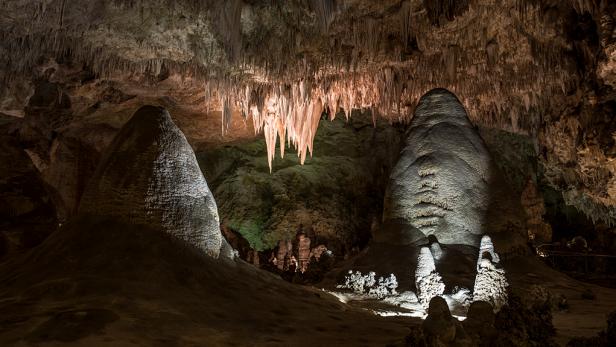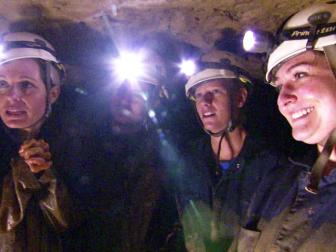Carlsbad Caverns National Park, New Mexico


Nick Parisse
Dr. Seuss, even in his wildest dreams, couldn't have created anything as surreal and wonderful as a natural cave formation. Entering any of Carlsbad Caverns National Park's 113 caves is like entering a larger-than-life sandcastle -- a psychedelic world where drips of sand have been transformed into a twisting, turning, myriad structure of peaks and spires.
You May Also Like
Imagine seeing the world from the inside out, and perhaps you've unknowingly pictured the park's caves. The classic movie Journey to the Center of the Earth was partially filmed in Carlsbad Caverns National Park. These underground labyrinths will entertain caving enthusiasts and novices alike with both self-guided and guided tours of the caves. Amateurs may breathe a sigh of relief upon seeing the elevators, electric lights and paved paths in Carlsbad Cavern's Big Room, while experts are in for an adventure with one of the park's Wild Cave Tours that takes them up rope ladders, through crevices and into rarely seen nooks and crannies of the caves. Carlsbad Caverns will delight visitors with their array of speleothems, or cave formations that include gypsum chandeliers, hairs and beards, soda straws, balloons and cave pearls.
The park's aboveground resources are no less spectacular. Rattlesnake Springs is a mini-oasis in the midst of the desert brush -- an area rich in birds, reptiles, mammals and butterflies. Also of note are the summer's evening bat flights. Carlsbad Caverns National Park is home to an infamous colony of hundreds of thousands of migratory Mexican free-tailed bats that emerge nightly from their homes in the caverns.
Geological History
Some 250 million years ago, a sea covered the region that is now the Chihuahuan Desert, and over time, a horseshoe-shaped, 400-mile-long inland reef was formed. The reef developed from layered remains of sponges, algae, seashells and calcite but was later buried under deposits of salts and gypsum as the sea receded. Tectonic forces pushed the buried rock layers up and erosion wore away softer minerals to expose the ancient reef as the Guadalupe Mountains. Deep underground, a brine originating from oil and gas deposits and rich in hydrogen sulfide was forced into cracks in the limestone. When this brine encountered oxygen-rich rainwater moving down through the rock, it created sulfuric acid. This acid dissolved the limestone creating cave passages. As the Guadalupe Mountains continued to lift up, the water drained out of the cave allowing fresh water to percolate through and leave minerals on the ceiling, walls, and floors that we know as cave decorations (i.e., stalagmites, stalactites, columns, cave pearls, flowstone).
Park Activities
Carlsbad Caverns' most popular activity is, of course, the cavern tours. A number of guided cave tours are available through the various caverns, but for a real taste of caving a Wild Cave Tour fits the bill. During these strenuous tours, participants engage in belly crawls, ladder climbs, pool crossings, tight crawls and free climbing. Two self-guided tours are also available and include highlights such as Devil's Spring, the Boneyard, Temple of the Sun and Rock of Ages.
Next Up
3 Must-Do Outdoor Activities in the Great Smoky Mountains
Big Bend National Park, Texas
Petrified Forest National Park, Arizona
National Parks for Families
Underground in Carlsbad Caverns National Park
Great National Park Lodges
Why This Mexican Town You Probably Haven't Heard of Is Worth a Visit for Day of the Dead
10 Fun National Park Activities for Kids
Our list of the 10 coolest ways kids can explore US National Parks this summer.





























.jpg.rend.hgtvcom.231.174.suffix/1674758726773.jpeg)











